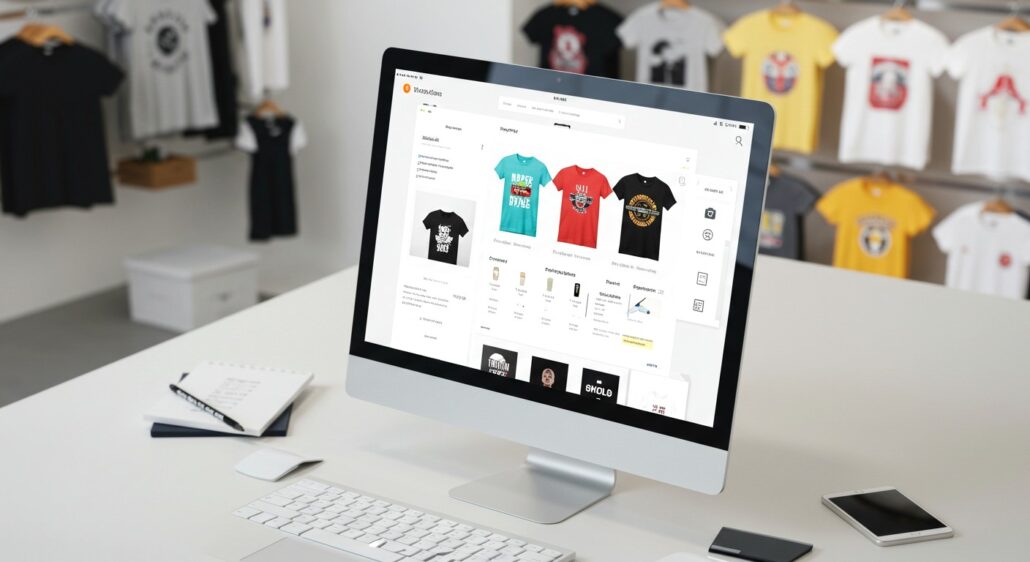Understanding Your Target Audience
In the realm of e-commerce, grasping the essence of your target audience is pivotal to ensuring the success of an online store. It is essential to identify and understand the demographics, preferences, and buying behaviors of potential customers. This process begins with thorough market research, which can significantly enhance the effectiveness of marketing strategies. By utilizing various methods such as customer surveys, analytics tools, and insights from social media platforms, businesses can gather invaluable data that informs their approach.
Customer surveys stand out as an effective means of obtaining direct feedback. By asking specific questions related to customer preferences, brands can tailor their product offerings and marketing messages to resonate with different segments. This can include queries about shopping habits, product features, and even pricing expectations, allowing businesses to shape their strategies accordingly.
Additionally, analytics tools play a crucial role in understanding customer behavior. Platforms such as Google Analytics provide insights into website traffic, user engagement, and conversion rates. By analyzing this data, online store owners can discern trends and patterns, enabling them to make informed decisions regarding website design, product placement, and promotional strategies. This empirical data serves as a foundation on which to build personalized experiences for visitors, ultimately fostering a stronger connection with potential buyers.
Social media insights also contribute significantly to understanding your audience. Monitoring engagement rates, comments, and shares on social platforms helps businesses gauge which aspects of their offerings resonate most with their target audience. This feedback loop is instrumental in enhancing customer profiles and refining marketing efforts to align with audience expectations.
In summary, understanding your target audience through various research methods is integral to creating an online store that not only attracts visitors but also converts them into loyal customers. By leveraging surveys, analytics, and social media insights, businesses can craft personalized experiences that truly resonate with potential buyers.
Designing an Engaging User Experience
Creating an engaging user experience (UX) is crucial for an online store, as it significantly influences conversion rates. A well-designed layout, intuitive navigation, appealing visuals, and mobile responsiveness are fundamental elements that contribute to a positive user experience. When users feel comfortable and engaged while navigating your website, they are more likely to make purchases.
The layout of your website should be clean and organized. A visually organized structure helps visitors to quickly find what they are looking for. Utilizing white space effectively can guide the eye and prevent users from feeling overwhelmed by too much information. Successful e-commerce sites like Amazon and Apple exemplify this, as they prioritize simplicity and clarity in their layouts, allowing customers to focus on products seamlessly.
Navigation is another essential aspect of user experience. Users should be able to navigate your site effortlessly, which can be achieved by incorporating a well-structured menu and clear call-to-action buttons. Ensuring that categories and products are easily accessible helps retain visitor attention and boosts the likelihood of conversions. Common practices include allowing users to filter products by various attributes, which enhances their shopping experience.
Visually appealing design elements, such as high-quality images and videos, play a significant role in enhancing user experience. Effective visuals can create an emotional connection with potential buyers, making them more likely to complete a purchase. Incorporating customer reviews and testimonials can additionally bolster credibility, reassuring shoppers while they browse.
Lastly, with the increasing number of mobile shoppers, optimizing your online store for mobile devices is imperative. A responsive design ensures that your site provides a seamless experience across devices, retaining users’ interest and increasing the chances of conversion. By focusing on these design elements, an online store can effectively engage visitors and guide them towards making purchases.
Optimizing Your Store’s Performance
Performance optimization is essential for any online store aiming to convert visitors into customers. The speed at which your website loads can significantly influence user experience and, consequently, conversion rates. Research indicates that a loading time of just a few seconds can make the difference between a completed purchase and an abandoned cart. To enhance loading speed, it is vital to utilize optimized images, leverage browser caching, and minimize HTTP requests. Furthermore, choose a reliable hosting provider that guarantees uptime and quick load times, ensuring that potential customers encounter minimal delays.
Search Engine Optimization (SEO) strategies also play a crucial role in enhancing your store’s performance. Properly optimizing your product descriptions, titles, and images can make your online store more discoverable on search engines, driving organic traffic. Integrating relevant keywords naturally throughout your content, without falling into the trap of keyword stuffing, is key to improving search engine rankings. Additionally, consider utilizing meta tags, alt attributes, and structuring your URL paths effectively to further boost your SEO efforts.
To assess and enhance the overall site performance continuously, implement A/B testing and data analysis. A/B testing allows you to compare two versions of a page or element to determine which performs better regarding user engagement and conversion rates. It enables you to make informed decisions based on real user behavior rather than assumptions. Coupled with data analysis, these methods will provide invaluable insights into customer preferences and site functionalities, allowing you to make adjustments that cater to your audience’s needs effectively.
In conclusion, by focusing on loading speeds, implementing robust SEO practices, ensuring reliable hosting, and utilizing A/B testing along with data analysis, you can significantly enhance your online store’s performance. This optimization will not only improve user experience but also increase the likelihood of converting visitors into loyal customers.
Implementing Effective Marketing Strategies
Creating an online store that successfully converts visitors into customers involves employing a range of effective marketing strategies. These strategies are essential in attracting potential customers and guiding them through the purchasing journey. One of the most powerful tools for achieving this is email marketing. Building a robust email list allows you to engage with your customers directly by sending personalized promotions, product updates, and abandoned cart reminders. Crafting well-thought-out email campaigns with enticing subject lines and clear calls to action can significantly increase click-through rates and subsequent conversions.
Another invaluable marketing strategy is leveraging social media platforms. By developing a coherent social media presence, brands can connect with a wider audience and showcase their products interactively. It is important to curate content that resonates with your target market, whether it be through high-quality images, engaging posts, or storytelling. Consistent interaction with followers through comments and direct messages can foster a community, further encouraging customer loyalty. Paid social media advertising can also effectively reach specific demographics and drive traffic to your online store.
In addition to social media, forming partnerships with influencers can amplify your brand’s reach. Influencers often have loyal followings and can authentically endorse your products, effectively bridging the gap between your store and potential customers. Selecting influencers whose values align with your brand and whose audiences reflect your target market is crucial for maximizing the impact of this strategy.
Lastly, pay-per-click (PPC) advertising can generate immediate traffic to your online store. Investing in targeted ads using platforms like Google Ads enables you to reach individuals actively searching for products similar to yours. It is important to continuously monitor and optimize these campaigns by analyzing performance data and adjusting keywords and bidding strategies accordingly. By implementing these marketing strategies effectively, your online store will be well-positioned to convert visitors into loyal customers.





